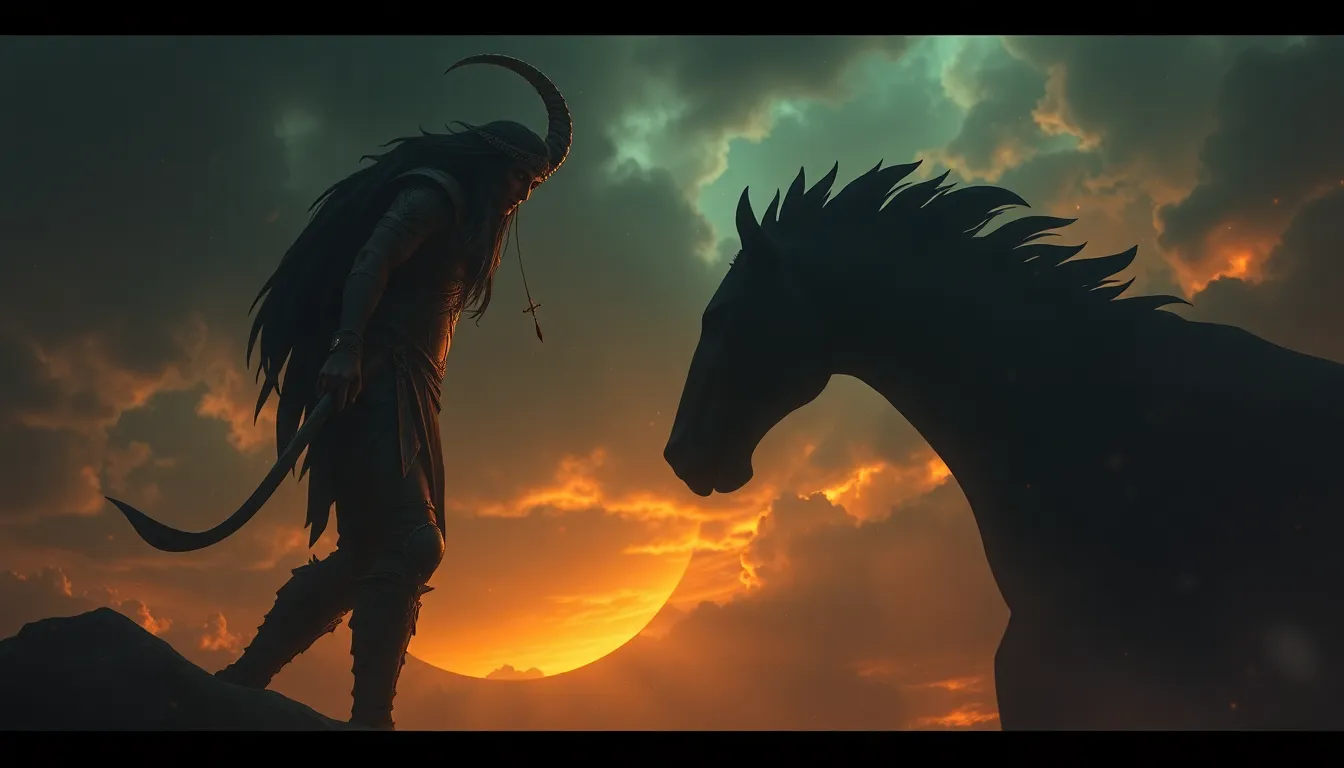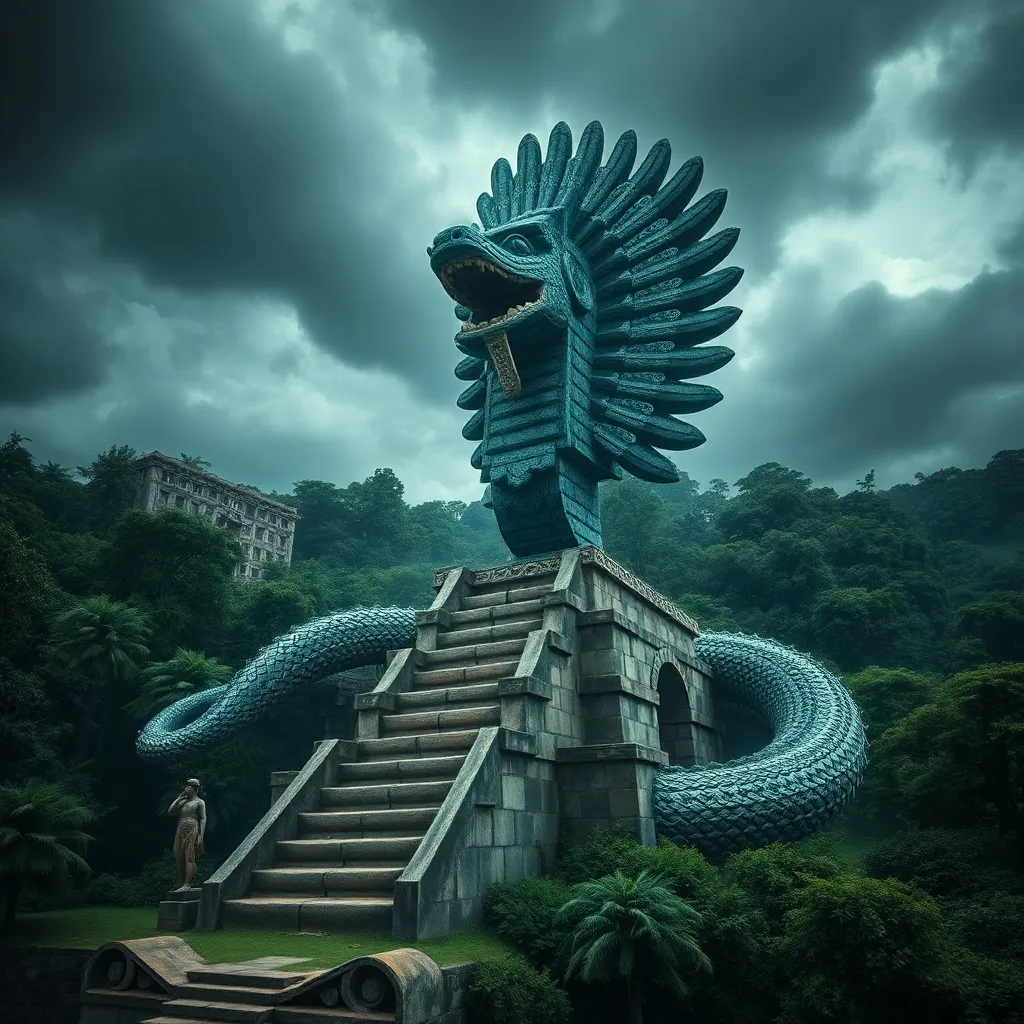The Rusalka’s Dance: Exploring the Ritualistic and Symbolic Aspects of Water Spirit Dances
I. Introduction
The Rusalka is a captivating figure in Slavic folklore, often depicted as a water nymph or spirit associated with bodies of water such as rivers, lakes, and streams. These ethereal beings hold significant cultural importance, embodying both the beauty and peril of nature. They are seen as guardians of water, representing the duality of life and death, attraction and danger.
Water spirits, including the Rusalka, play important roles across various cultures worldwide, symbolizing fertility, purity, and the cycle of life. Their dances often reflect the intimate relationship between humanity and nature, showcasing rituals that honor water’s vital role in sustaining life.
This article aims to delve into the ritualistic and symbolic aspects of the Rusalka’s dance, exploring its historical context, cultural significance, and modern adaptations.
II. Historical Context of Water Spirits in Slavic Mythology
The origins of the Rusalka can be traced back to ancient Slavic myths, where these spirits were believed to be the souls of young women who died tragically, often in water. Over time, the Rusalka evolved into a complex figure, embodying both benevolence and malevolence, reflecting the unpredictable nature of water itself.
Throughout the centuries, beliefs surrounding water spirits have adapted to changing cultural contexts, influenced by the spread of Christianity and modernization. The Rusalka became a symbol of the wild, untamed aspects of nature, often representing the fears and reverence people held for water.
When comparing the Rusalka to water spirits in other cultures, such as the Naiads in Greek mythology or the Mermaids of European folklore, we can see common themes. These spirits often embody the allure and danger of water, highlighting humanity’s complex relationship with this essential element.
III. The Dance of the Rusalka: A Cultural Ritual
The traditional Rusalka dance is a vibrant expression of community and spirituality, often performed during the summer months, particularly around the summer solstice. This dance is characterized by fluid, graceful movements that mimic the rippling of water and the gentle sway of aquatic plants.
The timing of the Rusalka dance is significant, as it coincides with seasonal agricultural practices and the celebration of fertility. It marks a time when communities come together to honor water’s life-giving properties, seeking blessings for bountiful harvests.
The community plays a vital role in the performance of this dance. It is often a collective effort involving music, singing, and elaborate costumes. Participants may form circles or lines, symbolizing unity and the interconnectedness of life.
IV. Symbolism of Water in Rusalka’s Dance
Water is often seen as a life-giving force, essential for survival and growth. In the context of the Rusalka’s dance, it also embodies a dual nature—representing both nourishment and potential danger. This duality is reflected in the movements of the dance, which can be both inviting and haunting.
- Life-giving Force: Water nourishes crops, sustains life, and supports ecosystems.
- Dual Nature: Water can also be destructive, capable of floods and drowning, embodying danger.
In Slavic culture, water is closely linked to femininity and fertility, often associated with maternal figures. The Rusalka’s dance conveys this connection through soft, flowing movements that evoke images of nurturing and creation.
Each gesture and movement in the dance can be interpreted as a narrative, expressing themes of love, loss, and the cyclical nature of life and death. The dance serves as a medium for storytelling, allowing participants to connect with their cultural heritage and the elemental forces of nature.
V. The Rusalka’s Dance in Contemporary Culture
In modern times, the Rusalka’s dance has undergone various adaptations in art and performance. Contemporary interpretations often blend traditional elements with innovative choreography, bringing new life to this ancient ritual.
Festivals and celebrations play a crucial role in preserving the tradition of the Rusalka’s dance. These events not only celebrate cultural heritage but also provide a platform for community engagement and education about the importance of water and nature.
However, globalization poses challenges to the perception and practice of Rusalka dances. As cultures intermingle, the unique characteristics of the Rusalka may be diluted or misunderstood. It is essential to maintain a balance between embracing modern influences and preserving traditional practices.
VI. Psychological and Emotional Aspects of the Dance
The therapeutic nature of dance, especially when connected to water spirits, offers profound psychological benefits. The Rusalka’s dance can serve as a healing practice, allowing participants to express emotions and release tension through movement.
- Personal Healing: Engaging in dance can provide individuals with a sense of release and catharsis.
- Communal Healing: Group performances foster a sense of belonging and support within the community.
The emotional narratives expressed in the Rusalka’s dance reflect the complexities of human experience. Through the dance, individuals can explore themes of grief, joy, and connection to the natural world, creating a rich tapestry of shared emotions.
VII. Challenges and Preservation Efforts
Despite its rich history, traditional water spirit dances like the Rusalka face various challenges in the modern world. Urbanization, environmental degradation, and changing cultural values threaten the continuation of these practices.
Numerous initiatives and organizations are working diligently to preserve the Rusalka’s dance and other cultural practices. These efforts include:
- Documenting traditional dances and rituals.
- Organizing workshops and performances to educate younger generations.
- Collaborating with cultural institutions to promote awareness and appreciation.
Preserving cultural heritage is essential for maintaining identity and fostering a sense of belonging within communities. The Rusalka’s dance represents not only a connection to the past but also a vision for the future, ensuring that these traditions endure.
VIII. Conclusion
In summary, the Rusalka’s dance is a profound expression of the intersection between humanity and nature, rich with ritualistic and symbolic meaning. Through its historical context, cultural significance, and modern adaptations, we gain insight into the enduring legacy of water spirits in Slavic folklore.
The Rusalka’s dance serves as a reminder of the beauty and danger of water, the nurturing aspects of femininity, and the importance of community. As we reflect on these themes, it becomes clear that the appreciation and preservation of cultural traditions are vital for future generations.
Let us celebrate and honor the Rusalka’s dance, recognizing its place in our shared human experience and committing ourselves to the preservation of these invaluable cultural practices.




